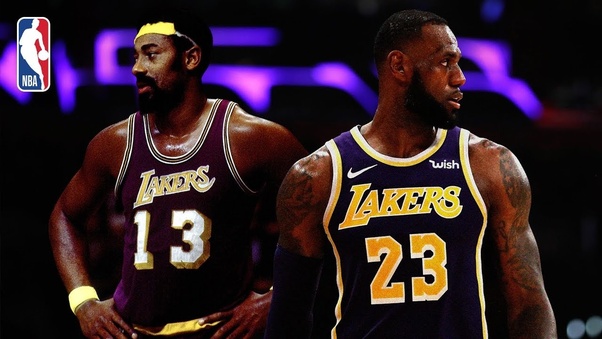
Why Wilt Chamberlain Isn’t as Well-Liked as LeBron James

In the pantheon of basketball legends, Wilt Chamberlain and LeBron James are two titans whose careers have left indelible marks on the NBA. However, despite Chamberlain’s unparalleled achievements and statistical dominance, he doesn’t enjoy the same level of universal adoration as LeBron James. To understand this disparity, we need to delve into their contrasting personas, careers, and the eras in which they played.
Wilt Chamberlain, known as “Wilt the Stilt,” is often remembered for his remarkable statistical achievements. His most famous feat, scoring 100 points in a single game, remains a record that has yet to be matched. Chamberlain’s physical dominance was unparalleled; he towered over his opponents at 7 feet 1 inch and played against a less athletic competition.
Yet, Chamberlain’s public persona was complex. His larger-than-life character was often perceived as arrogant or aloof. In interviews and personal anecdotes, he displayed a brash confidence that sometimes rubbed people the wrong way. Additionally, Chamberlain’s career was marred by controversies and conflicts with teammates and coaches, which affected his public image. He also had a well-publicized rivalry with Bill Russell, which, despite its competitive nature, contributed to the perception of Chamberlain as somewhat divisive.
In contrast, LeBron James has cultivated a public image that combines athletic excellence with a strong sense of social responsibility. Since entering the NBA in 2003, James has been celebrated not only for his versatility and skill on the court but also for his commitment to various social causes and philanthropy. His leadership in initiatives like the “I PROMISE School” for underprivileged children has earned him widespread admiration.
LeBron’s career has been characterized by his adaptability and sustained excellence, which has helped him stay relevant in an era dominated by social media and 24/7 news cycles. His willingness to engage with fans, share his personal journey, and actively participate in social discourse has endeared him to a new generation of basketball enthusiasts.
The era in which Chamberlain and James played also influences their popularity. Chamberlain’s career unfolded in the 1960s, a time when media coverage was limited compared to today’s standards. His interactions with the public were less frequent and less scrutinized than James’s, whose career has been under the constant gaze of the modern media landscape.
Chamberlain’s achievements were celebrated within the context of his time, but his larger-than-life personality and the less accessible nature of his public presence left him with a more polarizing reputation. In contrast, James’s career has been shaped by a media environment that favors personal branding and social engagement, helping him cultivate a more relatable and broadly appealing image.
Ultimately, the difference in popularity between Wilt Chamberlain and LeBron James highlights how public perception of athletes can be influenced by their personalities, the media landscape, and their contributions both on and off the court. While Chamberlain’s historical impact is undeniable, LeBron James’s combination of athletic prowess and personal charisma has made him a beloved figure for both his basketball achievements and his efforts to make a difference in society.
In the end, both legends have shaped the NBA in profound ways, but their differing paths to fame illustrate how the evolution of sports culture and media can influence the lasting legacy of its greatest stars.
Leave a Reply